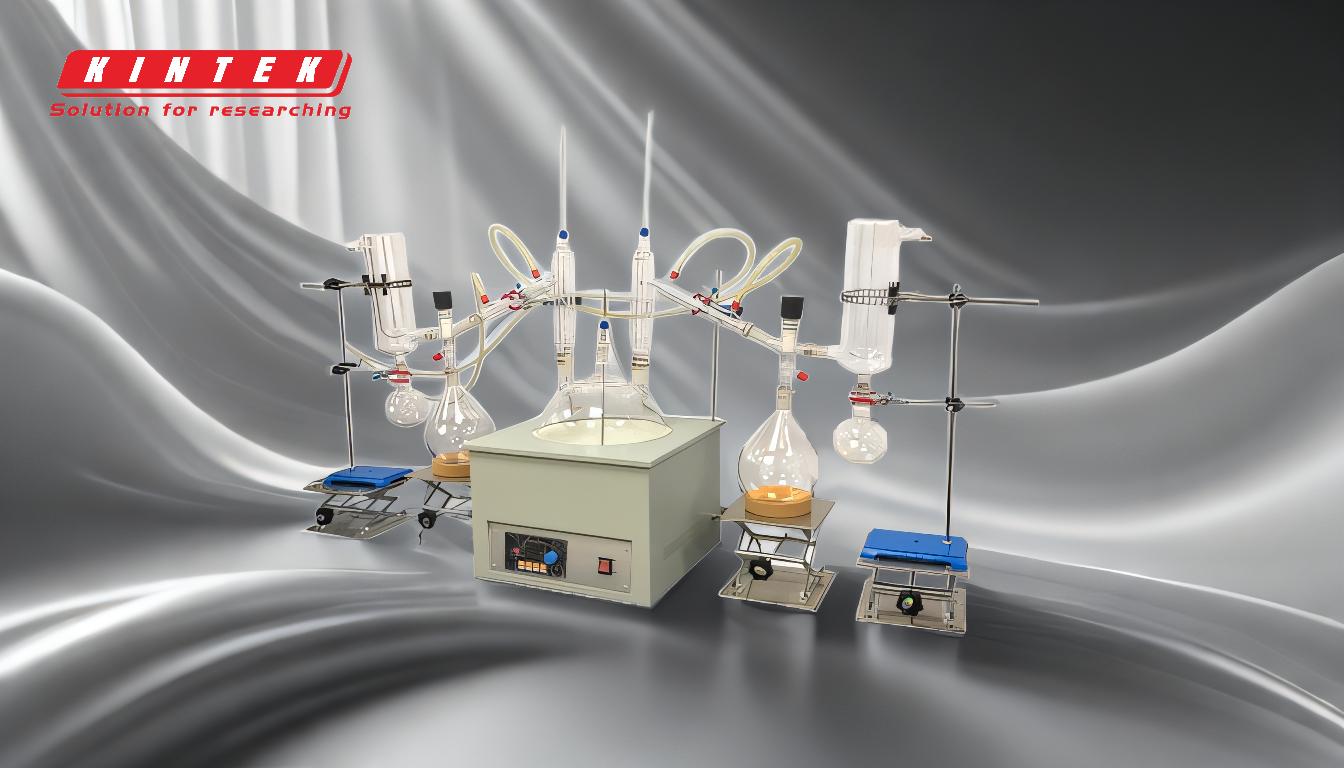Distillation is a separation process that relies on the differences in boiling points of the components in a liquid mixture. The two most common methods are simple and fractional distillation, which are widely used in industries such as petroleum refining, laboratories, and chemical factories. The process involves heating the mixture to vaporize the components, condensing the vapor back into liquid, and collecting the separated components. Proper setup, including secure connections, insulation, and controlled heating and stirring, is crucial for effective distillation. Vacuum distillation, such as using a rotary evaporator, is another method that operates under reduced pressure to lower boiling points and prevent thermal degradation of sensitive compounds.
Key Points Explained:

-
Principle of Distillation:
- Distillation separates components of a liquid mixture based on their different boiling points.
- The mixture is heated to vaporize the more volatile components, which are then condensed back into liquid form and collected.
- This process can also be adapted to separate gases by liquefying components through changes in pressure and temperature.
-
Types of Distillation:
-
Simple Distillation:
- Used for mixtures with significantly different boiling points.
- Involves a single vaporization-condensation cycle.
- Commonly used in laboratories for purifying solvents or separating liquids with large boiling point differences.
-
Fractional Distillation:
- Used for mixtures with closer boiling points.
- Employs a fractionating column to allow multiple vaporization-condensation cycles, enhancing separation efficiency.
- Widely applied in petroleum refining to separate crude oil into its various fractions (e.g., gasoline, diesel, kerosene).
-
Simple Distillation:
-
Setup and Operation:
-
Equipment Setup:
- Ensure all connections (e.g., between the boiling flask, condenser, and collection vessel) are secure to prevent leaks.
- Use insulation (e.g., insulation rope) to wrap the boiling flask and the bottom quarter of the distillation head, leaving the Vigreux column visible for observation.
-
Heating and Stirring:
- Begin heating at a low temperature (e.g., 60°C) and set stirring to approximately 200 RPM.
- For analog heating mantles, set the heating knob to the middle position and adjust slightly if no reaction occurs.
-
Monitoring:
- Observe the reaction closely and adjust the temperature as needed to maintain a steady distillation rate.
-
Equipment Setup:
-
Vacuum Distillation:
-
Principle:
- Operates under reduced pressure to lower the boiling points of components, preventing thermal degradation of heat-sensitive compounds.
-
Application:
- Commonly used in laboratories for purifying high-boiling-point or thermally unstable substances.
-
Equipment:
- Rotary evaporators are often used for vacuum distillation, providing efficient separation and recovery of solvents.
-
Principle:
-
Industrial Applications:
-
Petroleum Refining:
- Fractional distillation is essential for separating crude oil into useful products like gasoline, diesel, and lubricants.
-
Chemical Manufacturing:
- Distillation is used to purify chemicals and separate reaction products.
-
Laboratory Use:
- Simple and fractional distillation are employed for analytical and preparative purposes, such as solvent purification and compound isolation.
-
Petroleum Refining:
-
Safety and Efficiency Considerations:
-
Safety:
- Ensure proper ventilation and use appropriate protective equipment to handle volatile and potentially hazardous substances.
- Monitor the distillation process to prevent overheating or pressure buildup.
-
Efficiency:
- Optimize heating rates and stirring speeds to achieve efficient separation without compromising the integrity of the components.
- Use insulation and proper equipment setup to minimize heat loss and improve process efficiency.
-
Safety:
By understanding these key points, a purchaser of distillation equipment or consumables can make informed decisions about the type of distillation method and equipment needed for their specific application, ensuring safe and efficient operation.
Summary Table:
| Topic | Key Details |
|---|---|
| Principle | Separates components based on boiling points; involves heating, vaporizing, and condensing. |
| Types | - Simple Distillation: For large boiling point differences. |
| - Fractional Distillation: For closer boiling points; uses a fractionating column. | |
| Setup | Secure connections, insulation, controlled heating, and stirring are crucial. |
| Vacuum Distillation | Operates under reduced pressure; prevents thermal degradation of sensitive compounds. |
| Applications | Petroleum refining, chemical manufacturing, and laboratory solvent purification. |
| Safety & Efficiency | Proper ventilation, monitoring, and optimized heating rates ensure safe operation. |
Need help selecting the right distillation equipment? Contact our experts today for tailored solutions!











